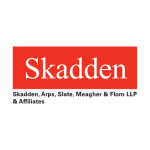Section 1 – PRIVATE EQUITY LANDSCAPE
1.1 How would you describe the current state of private equity activity in your jurisdiction, including the most common forms of private equity transactions?
Private equity (PE) sponsors, particularly larger alternative asset managers, have been buoyed by: an increasingly diverse range of asset classes and strategies; the availability of debt financing alternatives (including high-yield bonds and non-bank debt); multiple viable exit routes; an improved (albeit bifurcated) fundraising environment; a robust secondaries market; and improving macro-economic conditions.
The last six months have seen a broad range of PE transactions, including leveraged buyouts, refinancings, flotations and follow-on sales, trade sales, secondary buyouts, bolt-on deals and secondary transactions. Sponsor-backed flotations have been particularly prevalent.
1.2 Are there any factors that make your jurisdiction attractive to private equity investment at this time or that will spur private equity investment in the near term?
The UK offers a business friendly, free market economy. It has well-established and stable political, economic and legal systems, a leading global financial centre, relatively low corporation tax and inflation and a well-educated, English-speaking workforce.
The recent flurry of flotations emphasises the UK's attractiveness for PE investment which may be further spurred by the strong pipeline of PE-backed UK companies to be sold and interest from overseas investors.
Section 2 – SIGNIFICANT LEGAL DEVELOPMENTS
2.1 Have there been any recent regulatory developments, including tax developments, in your jurisdiction affecting the raising, formation, governing terms or operation of private equity investment funds or investments made by funds?
Effective from July 22 2013, the EU's Alternative Investment Fund Managers Directive (AIFMD) imposes significant new regulatory requirements on alternative investment fund managers (AIFMs) operating within the EU, including regarding required regulatory authorisations, conduct of business, regulatory capital, valuations, disclosures and marketing. Under the AIFMD, authorised EU AIFMs can market EU-based alternative investment funds (AIFs) to EU investors through a pan-European marketing passport. This marketing passport is unavailable to non-EU AIFMs or EU AIFMs managing non-EU AIFs until at least 2015.
Recent tax developments aimed primarily at countering perceived avoidance include: (i) a general anti-abuse rule; (ii) recharacterisation of certain members of UK limited liability partnerships (LLPs) as employees for tax purposes, potentially affecting fund managers structured as LLPs; and (iii) rules targeting certain artificial allocations of the profits and losses of partnerships (not just LLPs) with both individual and non-individual members.
2.2 Have anti-corruption legislation and/or environmental, social and governance principles affected the approach of private equity investors and/or transaction terms?
Sponsors are increasingly focused on compliance with anti-corruption legislation and environmental, social and governance principles, particularly given increasing regulatory scrutiny of corporate conduct and potentially significant financial penalties and reputational damage resulting from non-compliance.
This trend has been reflected in transaction terms by a general extension of buyers' contractual protection against target groups' non-compliance with laws.
2.3 Could a private equity sponsor (and/or its directors, officers or employees) be exposed to liability for a portfolio company's actions or omissions in your jurisdiction and if so, on what legal grounds?
A sponsor and its directors, officers or employees may be held liable for its portfolio company's actions or omissions, including in the following circumstances:
a sponsor's officer could incur liability as a shadow director of its portfolio company for (among other things) fraudulent or wrongful trading under the Insolvency Act 1986 or be disqualified for unfitness under the Company Directors Disqualification Act 1986;
a sponsor could incur liability under the EU Parental Liability Doctrine, which presumes liability of the sponsor on a joint and several basis with its portfolio company for any breach of EU antitrust law by the latter, where the sponsor has full ownership or decisive influence over, the portfolio company's commercial conduct;
a sponsor's senior officer who participates in the corrupt actions of, or consents to or connives with, its portfolio company could incur liability under the Bribery Act 2010; and
a sponsor could incur Bribery Act liability for failing to implement adequate procedures for its portfolio company where the latter acts on behalf and for the benefit or the sponsor.
Section 3 – FUND FORMATION AND STRUCTURE
3.1 Please describe the typical legal structure used to establish private equity funds, including the primary securities law considerations in private equity fund formation.
PE funds are typically formed as limited partnerships since they are tax-efficient, offer flexible internal governance and confer limited liability status on limited partners. General partners of certain English limited partnerships are now required to file publicly available accounts.
Subject to certain size limits, UK AIFMs must be authorised by the Financial Conduct Authority (FCA) to manage AIFs. To market an EU AIF to UK investors, the AIFM must apply to the FCA for permission. If the UK AIFM intends to market the AIF in other member states, it should notify the FCA, who will then notify the competent authorities.
Non-EU AIFMs or EU AIFMs managing non-EU AIFs must rely on the national private placement regimes (NPPRs) of individual member states, provided certain additional AIFMD and member state conditions are satisfied. Before marketing under the UK's NPPR, AIFMs must notify the FCA.
AIFMs marketing in the UK with the passport or under the NPPR must ensure the offer falls within an exemption to the Prospectus Directive and the UK's financial promotion regime regarding marketing to retail investors.
3.2 How are carried interest arrangements typically structured and is there a prevailing methodology for calculating the sponsor's carried interest?
Carried interest is typically structured through a limited partnership, with executives or their vehicles as limited partners. The carried interest limited partnership is in turn a special limited partner in the fund limited partnership. It is typically calculated on a whole-of-fund basis – the entitlement arises after investors have received a return of their drawn-down capital, plus any preferred return accrued.
3.3 Are fund investors typically subject to claw back or a return of distributions to cover their respective allocations of fund liabilities, such as indemnification payments?
Governing fund documentation typically states investors may be obliged to return distributions to satisfy indemnification obligations and certain other fund liabilities, often subject to time and quantum limitations. Returned distributions are generally considered when determining whether any sponsor's carried interest clawback is due.
Section 4 – STRUCTURE OF ACQUISITION VEHICLE
4.1 What type of entity is typically used as the acquisition vehicle for private equity investments in your jurisdiction? What are the key factors that determine the choice of entity?
The acquisition vehicle (Bidco) is typically a private limited liability company resident for tax purposes in the UK, although non-UK tax resident Bidcos are also common for certain investments. Bidco's jurisdiction of incorporation can vary based on the desired corporate flexibility and may be onshore or offshore.
The preferred overall acquisition structure and involvement of other entities primarily depends on: (i) the tax considerations of the sponsor, management and target; (ii) the finance provider(s)' requirements; and (iii) the expected profile of investor returns.
4.2 Does the structure of the acquisition vehicle vary depending on the nature of the investors in the private equity purchaser's fund?
The nature of the investors in the sponsor's fund would not typically change the answer to question 4.1, unless there are additional regulatory considerations, but may impact the decision to incorporate Bidco in the UK.
4.3 Describe how the choice of acquisition vehicle affects the nature of the incentive equity compensation that can be offered to management.
The choice of Bidco may affect the tax treatment of the incentive payment, but the fundamental commercial nature of the management incentive and economics of equity compensation will be broadly the same whatever vehicle is used (see 7.7).
Section 5 – ACQUISITION STRUCTURE
5.1 What are the typical structures used by private equity sponsors to acquire portfolio companies in your jurisdiction? What are the major considerations that govern this decision?
PE buyouts are commonly structured using a holding company (Topco) – the sponsor and management are respectively the majority and minority shareholders – and a wholly-owned subsidiary of Topco (Bidco), which acquires and holds the target's shares. Intermediate holding companies may be inserted between Topco and Bidco for tax or financing purposes. Topco is commonly an offshore vehicle but UK tax resident.
Sponsors typically use small proportions of equity finance to subscribe for preferred ordinary shares in Topco. They invest the balance as shareholder debt, commonly structured as payment-in-kind loan notes issued by Topco, deductions for interest payments on which can be surrendered against the target group's profits. These shares and shareholder debt are together known as the institutional strip.
An important tax consideration is the reduction or elimination of tax costs on flows of cash back from the portfolio companies to the PE fund, whether on dividends, interest payments or on exit. UK treaties effectively reduce withholding from dividends paid by portfolio companies to the UK and the UK does not generally impose tax on the receipt of dividends or withholding tax from dividends. Using a UK Topco may be attractive where the focus is not on capital growth.
5.2 What are the major issues that drive deal timing in your jurisdiction, including disclosure obligations, financing and regulatory approval requirements?
Deal timing is primarily driven by regulatory approvals (usually antitrust and sector-specific approvals) and, given the prevalence of locked-box pricing mechanisms (see 7.1), the preparation of financials.
Section 6 – GOVERNANCE
6.1 Are there any legal requirements in your jurisdiction that would prevent or otherwise affect the ability of a private equity acquirer to designate members of the board and/or management of its portfolio companies? Are there any legal risks for the private equity acquirer in designating such members?
There are no such legal requirements. However, when designating members of its portfolio company's board or management, a sponsor should seek to ensure that: (i) the company complies with applicable laws and has sufficient substance from a tax perspective; and (ii) the company's directors, officers and employees could not be considered shadow directors or otherwise be held liable for it's acts or omissions.
6.2 Are veto rights over major corporate actions (such as dissolution and winding up, merger or consolidation, significant acquisitions or dispositions, incurrence of material indebtedness, or changing the business of the company) typical rights held by private equity acquirers? Are there any limitations or prohibitions on such rights?
Sponsors commonly have veto rights over major corporate, commercial and financial matters.
Veto rights will generally be void if they constitute an unlawful fetter on any statutory powers or are contrary to public policy. Generally, appropriate structures can be put in place to ensure that customary veto rights can be effective.
6.3 Do private equity funds or any board members they appoint, have any fiduciary or other duties to minority equity-holders or other stakeholders of a portfolio company? Eg are there any prohibitions against acquisitions of, or investments in, competing or complimentary businesses?
A PE fund is not subject to such duties under English company law.
Board appointees generally owe duties to the company, but may, in limited circumstances, owe duties to shareholders, particularly regarding information disclosure. Duties may also be owed if the portfolio company is insolvent or verging on insolvency or if a specific relationship (such as principal and agent) is established between the sponsor-nominated directors and the shareholders. Finally, shareholders may be entitled to bring derivative actions on the company's behalf.
Under the AIFMD, PE funds owe additional obligations to portfolio companies and their stakeholders. When an AIF acquires control (over 50% of the voting rights) of certain unlisted companies, the AIFMD requires the AIFM of that AIF to comply with certain restrictions on distributions, capital reductions, share redemptions and buybacks by the target for the following 24 months and to disclose to shareholders (and employees' representatives or employees, as applicable): (i) acquisition of control by the AIF, and identities of the AIFMs managing the AIF; (ii) policies regarding preventing and managing conflicts of interest and communications relating to the company, particularly its employees; and (iii) its intentions regarding the company's future business and likely repercussions on employment.
Antitrust laws may prohibit the acquisition of, or investment in, competing or complimentary businesses.
Section 7 – DEAL TERMS
7.1 What pricing structures are typically preferred by private equity sponsors in your jurisdiction?
PE sellers usually favour locked-box pricing structures, which offer price certainty from the outset, control over financial information, potentially reduced contractual liability, cost savings and prompt distribution of sale proceeds to investors post-closing. Completion accounts is the other pricing mechanism commonly encountered.
7.2 What is the typical scope of the representations and/or warranties, covenants, undertakings and indemnities provided by a private equity seller and the target company's management team to an acquirer in an acquisition agreement?
In an acquisition agreement, a PE seller usually only provides warranties regarding title, capacity and enforceability and (assuming a locked-box pricing structure) a no-leakage undertaking. The PE seller may also provide pre-completion undertakings regarding the target business.
The target's management will often provide business warranties, typically under a separate management warranty deed. Their primary purpose is to elicit full disclosure regarding the target during the due diligence process.
7.3 What are the customary time limits and other limitations on liability applicable to representations and/or warranties given by a private equity seller and the target company's management team?
A PE seller's warranties are usually either subject to a cap equal to the aggregate purchase price, or uncapped (see 7.2).
Managers can limit their liability under the warranties by: (i) giving them severally (each manager is only liable for its proportionate share of liability for any claim) and subject to awareness; (ii) capping maximum liability for any warranty claims; and (iii) negotiating a (reasonably high) threshold and de minimis and a short time-limit for bringing claims.
7.4 What methods are typically used to fill any warranty gap in your jurisdiction? Is warranty and indemnity insurance commonly used in private equity transactions in your jurisdiction?
Warranty gaps can be bridged by a purchase price reduction to address specific potential liabilities or by managers giving business warranties: (i) on the basis that specific warranty claims will only be made against a seller-funded escrow fund or retention account; (ii) subject to warranty and indemnity insurance; (iii) as consideration for a financial incentive; and/or, (iv) subject to a cap equal to a proportion of their individual sale proceeds.
Buyer warranty and indemnity insurance policies have become more affordable and are increasingly common.
7.5 What conditions to a private equity sponsor's obligation to complete an acquisition are typically included in the acquisition agreement? Are these conditions usually substantially aligned with the conditions included in the financing documentation?
To enhance deal certainty, conditions to completion are typically limited to necessary regulatory approvals and do not generally include financing conditions. PE sellers also continue to strongly resist material adverse change clauses. The condition in the acquisition agreement and the financing and documentation are usually substantially aligned.
7.6 To what extent are purchaser funds at risk for the equity capital committed to a transaction? Are third-party beneficiary rights or other enforcement rights typically made available to the seller?
At signing, the PE fund typically gives a direct commitment to the seller to fund Bidco with the equity capital committed to the transaction, subject only to satisfaction of the conditions in the acquisition agreement and the financing being available. The seller can enforce this commitment directly against the PE fund to the extent it becomes unconditional and the PE fund fails to fund Bidco.
7.7 How is a management team's equity participation typically structured, including customary types of equity interest, percentage holding of equity and approximate level of investment?
Management equity structures and types depend on: the sponsor's priorities; managers' bargaining strength; senior managers' tax residence and domicile; and tax treatment of relevant equity interests.
Senior management increasingly prefers to receive carried interest through partnership interests. Where no partnership exists in the structure and for less senior executives, shares can be subscribed (sweet equity).
Managers beneath the higher bands may be invited to participate in management incentive plans or to become employee shareholders.
Except in large buyouts, management's percentage holding of Topco's ordinary shares is typically 5% to 15%. Management is usually expected to make a significant financial investment in the target group to ensure they remain incentivised to create further value.
About the author |
||

|
|
Shaun Lascelles Partner, Skadden London, UK T: +44 20 7519 7166 F: +44 20 7072 7166 E: shaun.lascelles@skadden.com Lascelles is a partner based in Skadden's London office, where his practice concentrates on cross-border mergers and acquisitions, joint ventures and private equity transactions. He is co-head of Skadden's global private equity group. |
About the author |
||

|
|
Paul Doris Counsel, Skadden London, UK T: +44 20 7519 7088 F: +44 20 7072 7088 Doris is counsel in Skadden's London office, where he focuses on cross-border mergers and acquisitions, private equity and infrastructure transactions. |
